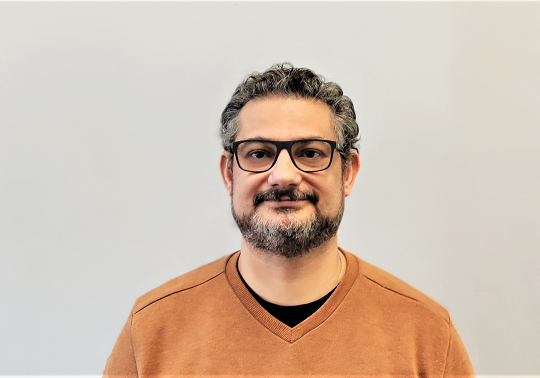
An international research team in which the Institute of Materials Science of the University of Valencia (ICMUV) participates has managed to control individual photons integrated into a chip with great precision aiming at applications in quantum acoustic technologies or integrated photonic networks. The method, carried out using nanoscale sound waves, will be a step forward on the path to hybrid quantum technologies. The finding was published in the journal Nature Communications.
Light and sound waves are the technological backbone of modern communications. While optical fibres and lasers make up the World Wide Web, nanoscale soundwaves are used to process wireless transmission between smartphones, tablets or laptops. One of the most pressing questions for the future is how these technologies can be extended to quantum systems, to build up secure quantum communication networks.
The international team that includes the researchers Mauricio M. de Lima and Dominik D. Bühler –from the Institute of Materials Science of the University of Valencia (ICMUV)– has managed to use soundwaves to switch individual photons generated on a chip. This method, demonstrated here for the first time, allows photons –light quanta particles– to be used as constituents of q-bits – the basic unit of information in quantum computing – so that they can be used for quantum acoustic technologies or complex networks of integrated quantum photonics.
“The functional principle of our chip was known to us as regards conventional laser light, but now, using light quanta, we have succeeded in making the long wished-for breakthrough towards quantum technologies.”, comments Mauricio M. de Lima, who coordinates the work in Spain. “By using nanoscale soundwaves, we are able to directly switch the photons on the chip back and forth between two outputs at unprecedented.”, adds Dominik Bühler, PhD candidate at University of Valencia during the research.
Scientists consider their results a milestone on the way to hybrid quantum technologies by combining different quantum systems: quantum dots, single photons and phonons – the quantum particles in the soundwave.
Hybrid quantum chips –designed at the University of Valencia and manufactured at the Paul-Drude-Institut für Festkörperelektronik (Berlin), with quantum dots produced at the Technische Universität München (TUM), and characterised at the Physics Institute of the Westfälische Wilhelms- Universität (Münster-Germany) by D. Bühler and Matthias Weiß – exceeded the expectations of the research team.
“We are already working hard to enhance our chip so that we can programme the quantum state of the photons as we wish, or even control several photons with different colours between four or more outputs”, says Mauricio de Lima. “We benefit here from a unique strength which our nanoscale soundwaves have: as these waves propagate virtually loss-free on the surface of the chip, an advantage when integrating multiple devices”, adds German physicist Hubert Krenner, who leads the research at Westfälische Wilhelms-Universität.
The work is funded by the European Union within the Horizon 2020 framework program (Marie Skłodowska Curie grant agreement 642688).
Reference:
Dominik D. Bühler, Matthias Weiß, Antonio Crespo-Poveda, Emeline D. S. Nysten, Jonathan J. Finley, Kai Müller, Paulo V. Santos, Mauricio M. de Lima Jr, Hubert J. Krenner (2022): On-chip generation and dynamic piezo-optomechanical rotation of single photons. Nature Communications 13, article number: 6998; DOI: 10.1038/s41467-022-34372-9
Links:








